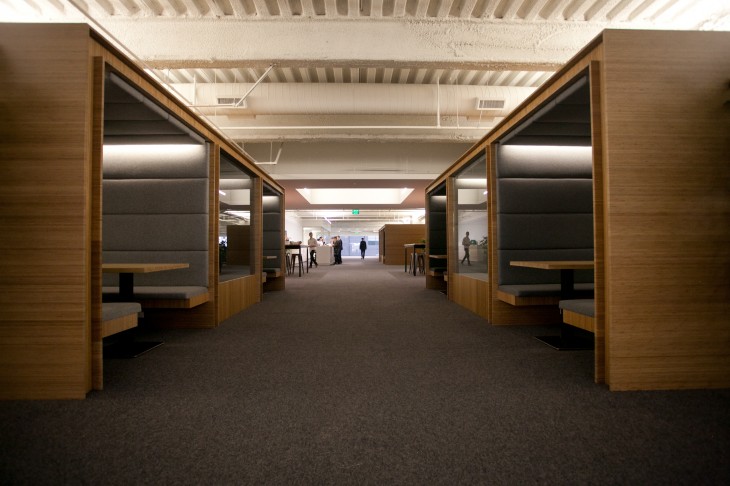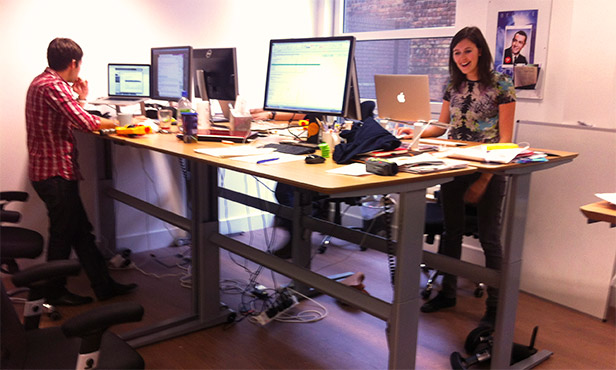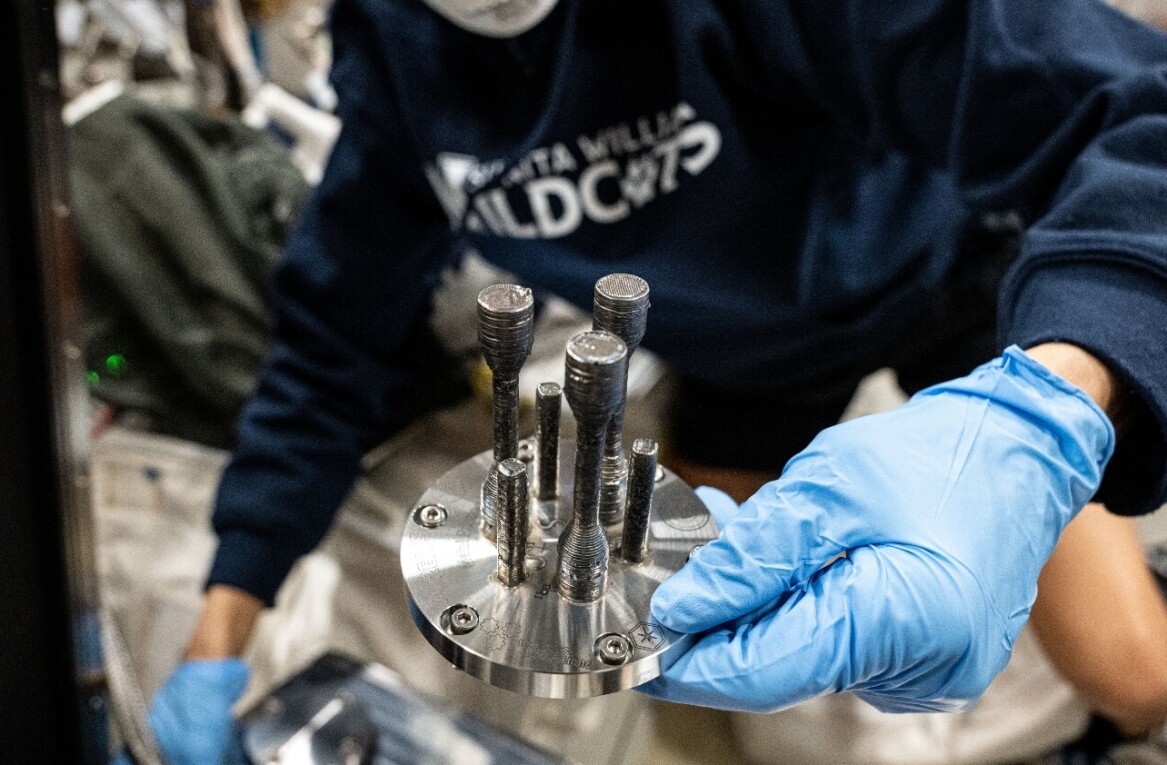
If you look at some of the latest startup offices, there seems to be a competition to who can have the coolest ping pong tables, kitchen, and big TVs displaying real time data. But are they essential to office productivity and culture?
We spoke to some of the hottest startups to hear their experiences and tips for building a space that welcomes productivity, creativity, and keeps employees happy.
Location, location, location
Where your office is located is obviously one of the most important thing about choosing the right space for your company. Aside from needing to be conveniently located for your employees to get to (and potential clients to visit for meetings), Ori Goshen, co-founder and vice president of research and development at Tawkon, says staying close to good bars and restaurant options also give employees a sense of life outside the work space.
“Having fast or takeaway options when there’s no time for breaks is perfect,” Goshen says. “Going out and grabbing a beer after work time is always a great way to make a social bonding experience.”
For Russell Hall, co-founder of Hailo, the convenience for potential customers to drop by for support helps contribute to the company’s growth. “Drivers can pop in at any time to speak to our full time support team of taxi drivers who are on hand to aid with Hailo queries,” he says. “The office is adjacent to one of London’s biggest taxi hubs where drivers can share a cup tea and meet up to chat about their day.”
Open and cozy is the way to go
You may find that lots of employees love working remotely due to the coziness of their home office. Designing a space that feels like home is key to making people feel comfortable collaborating at the office.
Square Global Facilities Manager Maja Henderson says moving to a large office space that is designed to feel small promotes synergy.
“Our new office is more than 150,000 square feet – which is three times the size of our previous headquarters in the San Francisco Chronicle building,” Henderson says. “[However,] 90 percent of our meeting spaces, such as conference rooms and cabanas, are made for eight people or less. The design reinforces our commitment to small teams, as well as designers and engineers working alongside one another.”

Having a good balance between collaborative space and quiet space gives employee the option of being in a socially creative atmosphere or a peaceful area to crunch out the work.
“We have an open floor plan with glass conference rooms, and monitors throughout the office displaying company metrics and current projects,” Henderson says. “Stand-up tables, dry-erase surfaces, and multiple common areas – such as our coffee bar and multiple roof desks – make collaborating easy and spontaneous.”
Jared Simon, COO of HotelTonight, echoes the sentiment for his company’s downtown San Francisco office.
“We’re also firm believers that optimal collaboration requires cross-pollination among different types of people with different perspectives and backgrounds,” he says. “We designed our space to encourage interactions between people from different groups who might not otherwise run into each other.”
Also remember that if your company has multiple locations, it is important to provide ways for employees to communicate effectively.
“When you start expanding globally, over-communication is essential, so we have a company-wide meeting every month via video conference,” Alastair Mitchell, CEO of Huddle, says. ” The teams gather together to find out the latest news from across the business so great video conferencing technology is now vital for us.”
The oddball perks are what can potentially drive creativity
When employees don’t feel like they are at work, it can sometimes lead to new product ideas that seem unforced. It also gives them the chance to unwind or de-stress.
“[At HotelTonight], we built in lots of opportunities for people to interact, from a ping pong table and vintage video game room to lots of comfortable, casual conversation areas scattered throughout the office,” Simon says.
Viktoras Jucikas, co-founder and CTO of Yplan, says allowing employees to personalize the space can be inspiring to others with similar mindsets.
“We’ve got bean bags, table football, a ping pong (and for that matter beer pong) table, posters of our favorite bands up on the walls, and a small library so that people have somewhere they can go for inspiration,” Jucikas says. “Our ‘flying desks’ mean people can work standing or sitting, depending on how the mood takes them, and we have quite the arsenal of Nerf guns – helpful if you need to get someone’s attention.”

Music is also a good way to keep the energy around the office pumped. Consider having someone in the office DJ the day’s playlist, or let employees switch around and pump their favorite tunes.
An army runs on its stomach
One of the most common threads in the latest startup office trends is offering employees fuel to keep their energies up. From offering breakfast and/or lunch once a week to making sure the coffee in the kitchen is always fresh and restocked, many startup managers say food is one perk not to be overlooked.
“Food is a uniting force when we celebrate great news, such as an amazing new customer or product feature, as we celebrate with donuts and pink champagne,” Mitchell says. “This celebratory combination was born because there was a Krispy Kreme stand near Huddle’s second London office on Bermondsey Street.”

Sharing is caring
Perhaps your company is not at a level to own acres of office space just yet. Not to worry: Small, shared spaces can be a helpful way to build your all-important network.
“Tawkon offices are based inside TheTime, a leading investment firm in Israel (and one of our investors),” Goshen says. “It has a unique huge co-working space that achieves this balance by having closed working spaces for each company and sharing all other facilities between the companies. This helps us stay focused as a company and at the same time learn and cooperate with other companies in an unbelievably accelerated pace.”
Inviting other companies or customers over is also important so others can understand who you are and where you stand in their community. “We regularly host community events in the building, where our top YPlanners can meet the rest of the team,” Jucikas says.
Above all, having an office you are proud to call your own is what will keep employees happy to stick around. “Our office needed to be a place that people wanted to come to, rather than staying home and working in their pajamas,” Simon says. “We worked hard to design a visually stunning space that we’re all proud to show off to our friends.”
So there you have it – stories, tips and expert advice for designing a startup office to make your employees happy, productive, and keen to be in the office.
What perks does your company offer at the office?
Get the TNW newsletter
Get the most important tech news in your inbox each week.




